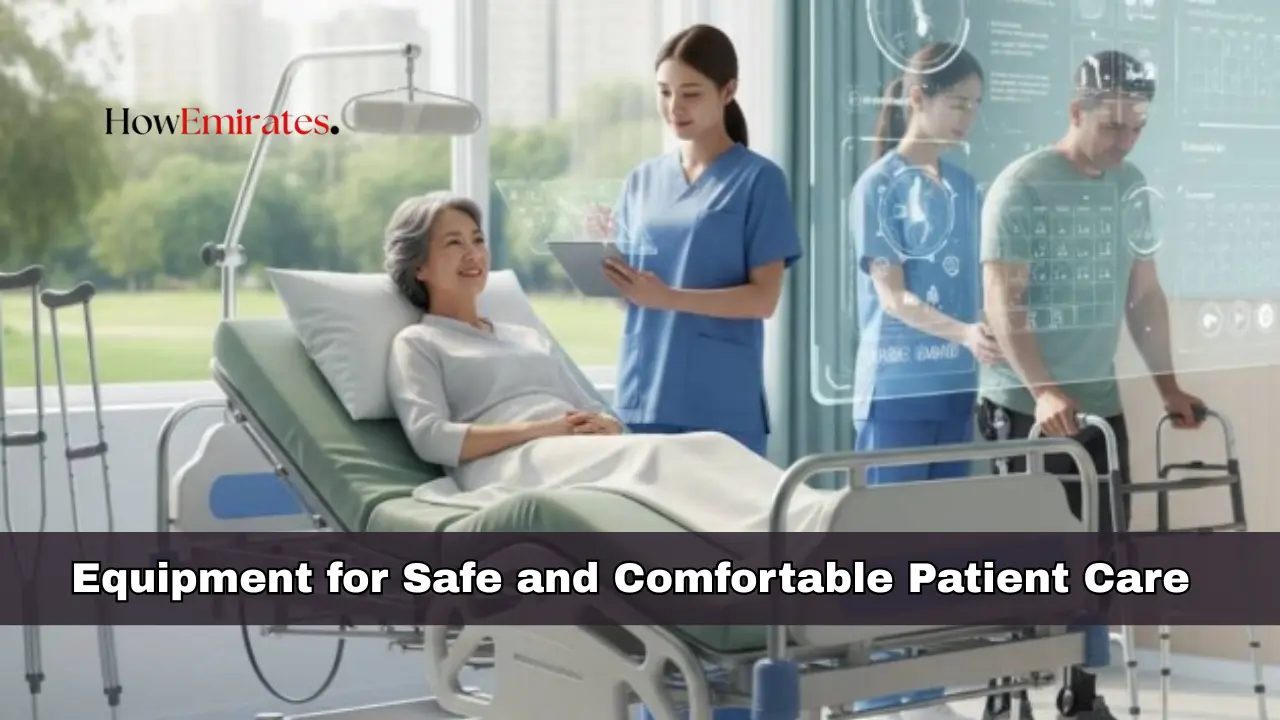Essential Equipment for Safe and Comfortable Patient Care

Quality healthcare is about treatments, comfort, safety, and dignity of patients as they recover. Every detail in a healthcare environment, design of the room and the type of equipment used, contributes to better outcomes. One of the most crucial pieces of equipment is the hospital bed, designed to offer comfort and proper support for patients who need long term care or mobility assistance.
These specialized beds can be adjusted to suit various positions, improving circulation, reducing pressure on sensitive areas, and supporting quick recovery. Beyond comfort, they also make it easier for healthcare professionals to assist patients safely, reducing the risk of injury for both sides.
The Role of Modern Equipment in Patient Care
Modern medical equipment plays a key role in promoting patient independence and recovery. Adjustable wheelchairs, ergonomic mattresses, and mobility aids all contribute to an improved quality of life for those undergoing treatment or rehabilitation.
Innovations are designed to reduce discomfort while allowing individuals to regain confidence in their ability to move and perform daily tasks. This sense of independence can be just as important for emotional recovery as physical healing.
When the right tools are used, patients are not just being cared for, they are being empowered. This shift toward patient centered design reflects the modern philosophy of healthcare safety, comfort, and dignity above all.
Reducing Strain and Increasing Efficiency
While the focus often rests on patients, caregivers benefit immensely from high quality equipment. Medical professionals and family caregivers face physical and emotional challenges daily. Adjustable beds, transfer chairs, and lifting systems help reduce the strain of moving or repositioning patients.
These solutions prevent injuries and enhance overall efficiency, caregivers can focus on providing attentive, compassionate care with physical effort. Patients receive more consistent, confident support, and caregivers experience less fatigue and stress.
Time saving equipment also contributes to better organization in hospitals and clinics. When staff can move patients, clean spaces, and manage treatments with ease, it leads to smoother workflows and more personalized patient care.
The Importance of Comfort and Mobility in Recovery
The physical environment can either speed up or slow down the healing process. Modern healthcare spaces are therefore designed with thoughtful attention to how patients move, rest, and interact with their surroundings.
Mobility aids such as crutches, walkers, and transfer chairs allow patients to stay active safely. Regular movement helps maintain muscle strength and improves circulation, which is critical for faster recovery. Ergonomic furniture also helps prevent bedsores and discomfort from long periods of rest.
A comfortable and supportive environment gives patients a sense of control, reducing stress and promoting emotional well being. Hospitals and home care facilities that prioritize these aspects often see better patient satisfaction and improved recovery times.
Protecting Patients Through Reliable Equipment
Every piece of medical equipment, no matter how small, contributes to creating a secure environment. Devices such as side rails, bed alarms, and nonslip mats help prevent falls and accidents.
Regular maintenance and inspection of equipment are essential to ensure reliability. Proper training for caregivers on how to use and adjust medical tools further enhances safety standards. The combination of well designed tools and well trained staff creates a seamless, secure care experience for patients.
The use of support devices such as a patient hoist allow caregivers to lift and move patients comfortably without causing strain or injury. By supporting safe transfers, hoists also maintain the patient’s sense of dignity and trust.
Technology’s Role in Modern Patient Care
Technology continues to redefine healthcare, offering new ways to ensure both safety and comfort. Smart beds can now detect movement and automatically adjust to reduce pressure points. Remote monitoring systems track vital signs, allowing caregivers to respond quickly when changes occur.
Communication devices make it easier for patients to call for assistance or express their needs, reducing feelings of isolation. These advancements enhance both safety and connection two key components of healing.
While technology has brought incredible progress. The human touch remains irreplaceable in patient care. Compassion, patience, and attention transform medical equipment from simple tools into instruments of healing.
Conclusion: Building a Future of Safe and Comfortable Care
The journey to recovery is smoother when comfort, safety, and compassion come together. The right medical equipment empowers patients to regain control of their lives while allowing caregivers to perform their roles more effectively.
Well designed and advanced mobility aids, every tool plays a role in shaping a supportive care environment. As technology evolves and awareness grows, the future of healthcare will continue to focus on enhancing both patient experience and caregiver well-being.
In the end, true healing is not only about medical expertise but also about the thoughtful design of care, where every piece of equipment contributes to restoring comfort, dignity, and hope.






